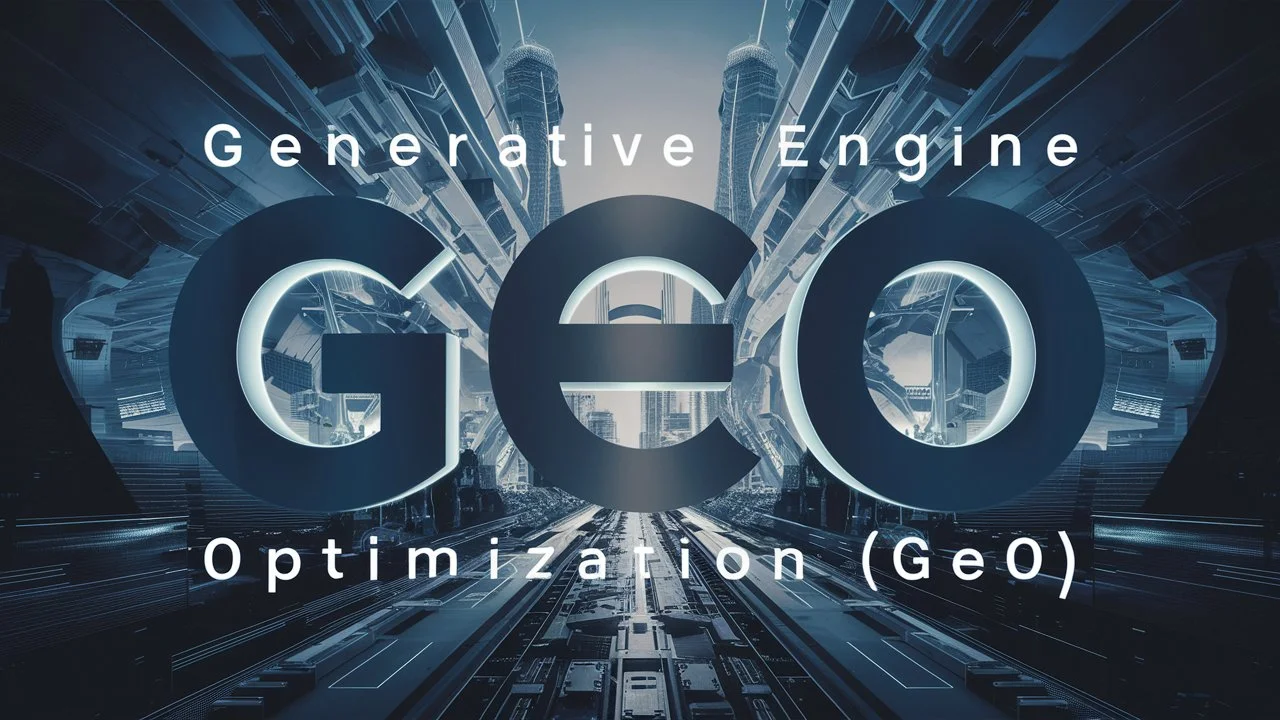In the ever-evolving landscape of digital marketing, staying ahead of the curve is essential for brands seeking to maintain a competitive edge. One of the latest advancements in this field is Generative Engine Optimization (GEO). But what exactly is GEO, and how can it help your brand thrive in today’s AI-driven world?
What is Generative Engine Optimization (GEO)?
Generative Engine Optimization, or GEO, is a cutting-edge approach to digital marketing that focuses on optimizing a website’s content to enhance its visibility in AI-driven search engines. These advanced search platforms, which include ChatGPT, Perplexity, Gemini, Copilot, and Google AI Overviews, utilize artificial intelligence to generate search results in response to user queries. The goal of GEO is to ensure that your brand appears prominently in these AI-generated results, thereby increasing your online visibility and attracting more targeted traffic.
How Does GEO Work?
The fundamental principle behind GEO is to create content that AI algorithms recognize as highly relevant and valuable to users’ search queries. This involves a combination of strategic keyword usage, content structuring, and technical optimizations. Here’s a closer look at the key components of GEO:
Keyword Optimization: Just like traditional SEO, GEO relies heavily on the use of keywords. However, the focus is not just on high-volume keywords but also on long-tail keywords and natural language phrases that AI systems are more likely to understand and prioritize. By incorporating these keywords naturally into your content, you can increase the chances of your website being featured in AI-generated search results.
Content Structuring: AI-driven search engines are designed to provide users with the most relevant and comprehensive answers to their queries. To align with this goal, your content must be well-structured and easy to navigate. This includes using clear headings and subheadings, bullet points, and concise paragraphs. Structured content helps AI systems quickly identify the main topics and subtopics within your content, improving your chances of being featured in search results.
Technical Optimizations: Beyond content, GEO also involves technical enhancements to your website. This includes ensuring fast load times, mobile-friendliness, and secure connections (HTTPS). AI-driven search engines prioritize websites that offer a seamless user experience, so these technical factors play a crucial role in your GEO strategy.
The Importance of GEO in Modern Digital Marketing
As search behavior evolves, achieving better visibility in AI-generated responses becomes increasingly crucial. In the past, traditional search engine optimization (SEO) focused primarily on optimizing content for search engines like Google and Bing. However, with the advent of AI-driven search platforms, the rules of the game have changed. Here’s why GEO is essential for your brand’s success:
Enhanced Visibility: AI-driven search engines are becoming more prevalent, and their usage is expected to grow significantly in the coming years. By optimizing your content for these platforms, you ensure that your brand remains visible to a broader audience, including those who rely on AI-generated results for their search queries.
Targeted Traffic: One of the key benefits of GEO is its ability to attract highly targeted traffic. AI-driven search engines are designed to understand user intent more accurately, delivering results that closely match what users are looking for. By appearing in these results, you attract visitors who are genuinely interested in your products, services, or areas of expertise.
Engaging User Experience: GEO is not just about being seen; it’s about engaging potential customers, clients, and audiences in meaningful ways. By providing valuable and relevant content, you create a positive user experience that encourages visitors to stay longer on your site, explore your offerings, and ultimately convert into loyal customers.
Implementing GEO: Best Practices for Success
To successfully implement GEO and reap its benefits, consider the following best practices:
Understand Your Audience: Start by gaining a deep understanding of your target audience and their search behavior. What questions are they asking? What problems are they trying to solve? Use this information to create content that directly addresses their needs and interests.
Create High-Quality Content: Focus on creating high-quality, informative, and engaging content that provides real value to your audience. This includes blog posts, articles, videos, infographics, and other types of content that can capture the attention of AI-driven search engines.
Use Natural Language: AI systems are designed to process natural language, so make sure your content is written in a conversational and easy-to-understand manner. Avoid overly technical jargon or complex language that might confuse both users and AI algorithms.
Optimize for Voice Search: With the rise of voice-activated assistants like Siri, Alexa, and Google Assistant, optimizing for voice search is becoming increasingly important. This involves using natural language phrases and questions that people are likely to use when conducting voice searches.
Monitor and Adapt: GEO is an ongoing process that requires continuous monitoring and adaptation. Keep track of your performance in AI-driven search engines and make adjustments as needed to stay ahead of the competition.
The Future of GEO: What to Expect
As technology continues to advance, the role of GEO in digital marketing will only become more significant. AI-driven search engines are constantly evolving, becoming more sophisticated in understanding user intent and delivering personalized results. Here are some trends to watch for in the future of GEO:
Increased Integration of AI: AI will become even more integrated into search engines, making GEO an essential component of any digital marketing strategy. Brands that embrace GEO early on will have a competitive advantage in the ever-changing digital landscape.
Greater Emphasis on User Intent: AI-driven search engines will continue to improve their ability to understand user intent, delivering results that are not just relevant but also contextually accurate. This means that GEO strategies will need to focus on creating content that aligns closely with what users are looking for at any given moment.
Personalization and Customization: Personalized search results will become more common, with AI algorithms tailoring results based on individual preferences, behavior, and history. GEO will need to adapt to this trend by creating content that appeals to specific segments of your audience.
Voice and Visual Search: The rise of voice and visual search will influence GEO strategies. Optimizing for these types of searches will require new approaches, such as using more descriptive alt text for images and focusing on conversational keywords.
Conclusion: Embracing GEO for Digital Success
In conclusion, Generative Engine Optimization (GEO) represents the next frontier in digital marketing. By optimizing your content for AI-driven search engines, you can enhance your brand’s visibility, attract targeted traffic, and engage your audience in meaningful ways. As search behavior continues to evolve, embracing GEO will be essential for staying ahead of the competition and achieving long-term digital success. Start implementing GEO strategies today and position your brand for a future where AI-driven search engines play a central role in the online landscape.
By following the best practices outlined in this guide, you can create a robust GEO strategy that not only improves your search engine visibility but also delivers a superior user experience. Remember, the goal of GEO is not just to be seen, but to connect with your audience in ways that build trust, loyalty, and lasting relationships. So, take the leap into the world of GEO and watch your brand’s online presence soar.


















